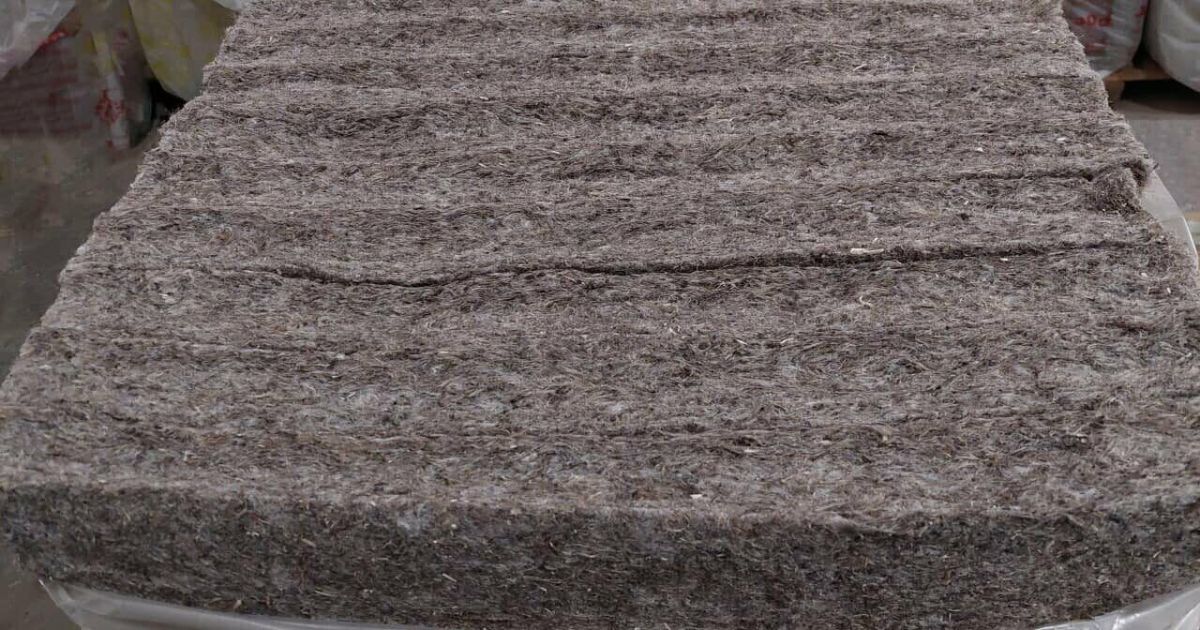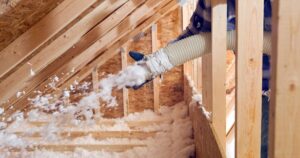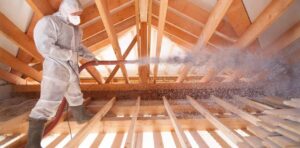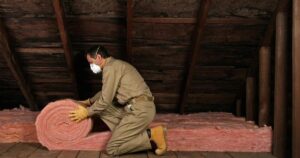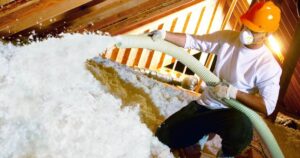When it comes to insulating your attic, you’ve got several options to choose from. One popular choice among homeowners is cellulose insulation. It offers great thermal performance and is eco-friendly, making it an excellent choice for those looking to improve their home’s energy efficiency.
How thick should cellulose insulation be in the attic, and what are its features, pros, and cons? In this comprehensive guide, we’ll explore the details to help you make an informed decision for your home.
What is Cellulose Insulation?
Cellulose insulation is made from recycled paper products, typically newsprint and cardboard, treated with fire-retardant chemicals to enhance its safety and performance. It’s a fantastic choice for homeowners who want an eco-friendly insulation solution, as it diverts waste from landfills and reduces the demand for new resources.
The Features of Cellulose Insulation
1. Eco-Friendly:
Cellulose insulation is one of the most eco-friendly insulation materials available. Since it’s made from recycled paper products, it helps reduce the carbon footprint associated with manufacturing and disposal.
2. Fire-Resistant:
Cellulose insulation is treated with fire-retardant chemicals, making it a safer option for your home. It can slow down the spread of fire, providing valuable time for evacuation in case of a fire emergency.
3. Thermal Performance:
Cellulose insulation, like foam insulation, offers excellent thermal performance. It’s known for its high R-value, which measures the insulation’s ability to resist heat transfer. This means it can effectively keep your home warm in winter and cool in summer. While foam insulation provides an airtight seal, cellulose insulation is recognized for its eco-friendly and sustainable properties.
4. Sound Insulation:
Apart from thermal benefits, cellulose insulation also provides sound insulation. It can help reduce noise from outside, creating a quieter and more comfortable indoor environment.
5. Pest and Mold Resistant:
Cellulose insulation contains borate, which makes it resistant to pests like rodents and insects. Additionally, the borate can help prevent the growth of mold and mildew.
The Pros of Cellulose Insulation
Now that we’ve covered the features of cellulose insulation, let’s delve into its advantages:
1. Cost-Effective:
Cellulose insulation is cost-effective when compared to some other insulation options. Its affordability makes it a popular choice for homeowners on a budget.
2. Energy Efficiency:
Due to its excellent thermal performance, cellulose insulation can significantly reduce your energy bills. It keeps your home warmer in the winter and cooler in the summer, reducing the need for constant heating and cooling.
3. Eco-Friendly:
If you’re environmentally conscious, cellulose insulation is the way to go. By using recycled materials, it contributes to a more sustainable future.
4. Easy Installation:
Professional installation is typically quick and straightforward, saving you time and hassle.
5. Fire Safety:
The fire-retardant treatment adds a layer of safety to your home, reducing the risk of fire spread.
The Cons of Cellulose Insulation
While cellulose insulation has many advantages, it’s essential to consider the potential drawbacks:
1. Settling:
Over time, cellulose insulation may settle, reducing its effectiveness. However, proper installation techniques can minimize this issue.
2. Moisture Absorption:
Cellulose insulation can absorb moisture, which can lead to mold growth if not adequately managed. Proper ventilation and moisture control are crucial.
3. Weight:
Cellulose insulation is heavier than some other insulation types, so it’s essential to ensure that your attic can support its weight.
How Thick Should Cellulose Insulation Be in the Attic?
The thickness of cellulose insulation in your attic depends on your local climate, the R-value you want to achieve, and your budget. As a general guideline, attics in colder climates may require a higher R-value, which can be achieved by installing a thicker layer of cellulose insulation.
The U.S. Department of Energy recommends an R-value between R-49 and R-60 for attics in cold climates.
FAQ’s
How much insulation do I need for 1000 square feet?
For example, if the square footage of the room you’re planning on insulating is 1,000 square feet and you want to achieve an R-value of 60, you will need approximately 17 bags to fully insulate your room.
How do I calculate insulation for my attic?
To do so, take the square footage of the space and divide it by either the depth or the desired R-value.
Conclusion
In conclusion, cellulose insulation is an excellent choice for insulating your attic due to its eco-friendliness, thermal performance, and cost-effectiveness. However, it’s crucial to ensure proper installation, adequate moisture control, and the right thickness to achieve the desired R-value.
By understanding how thick cellulose insulation should be in your attic and considering its features, pros, and cons, you can make an informed decision that enhances your home’s energy efficiency and comfort.

